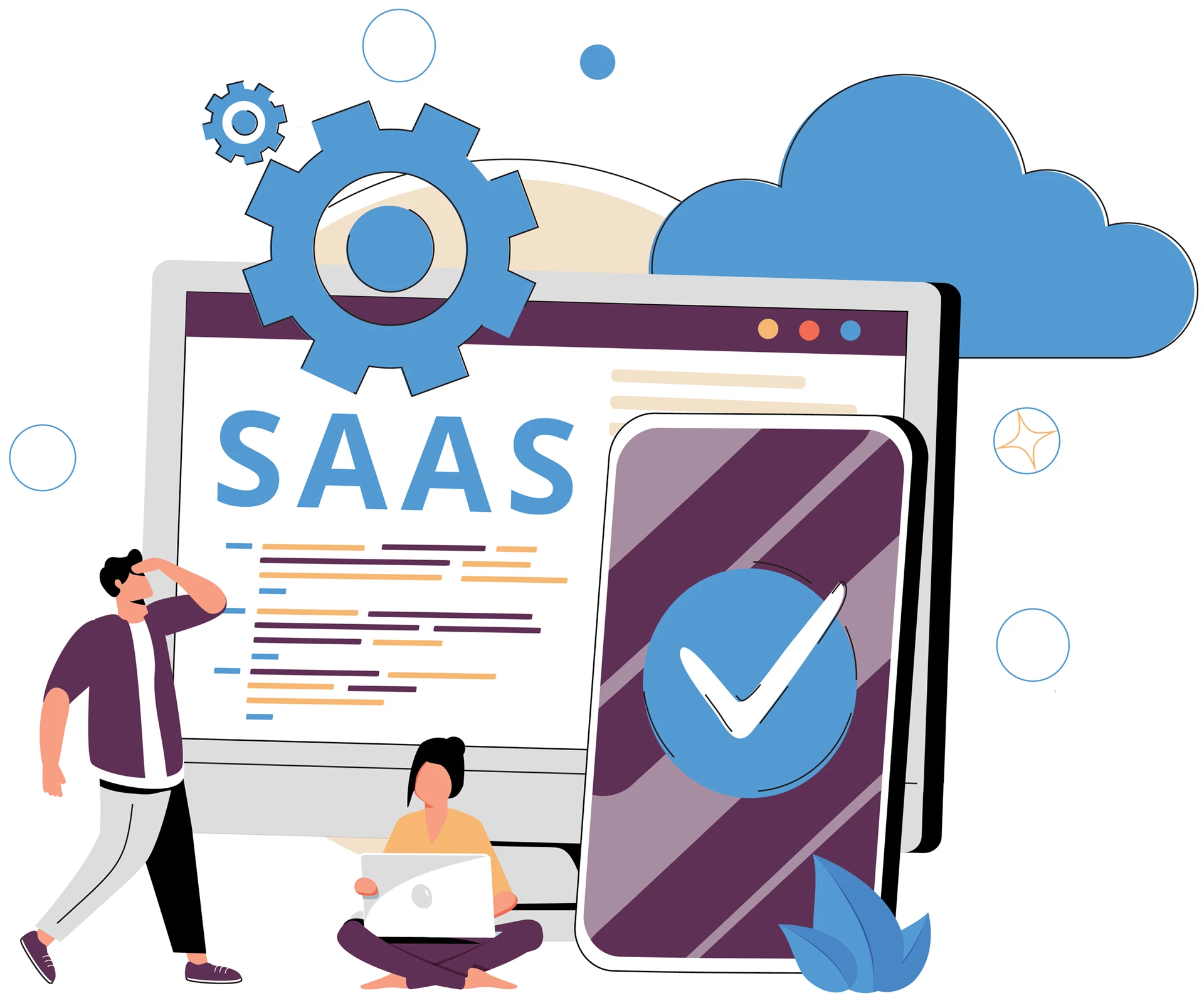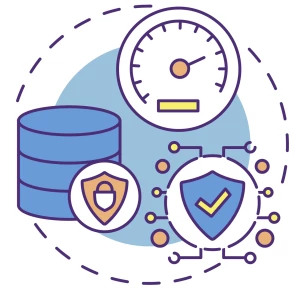Six tips for launching a software as a service (SaaS)

Software as a service, or SaaS, is a licensing and distribution model whereby software is granted by subscription and hosted in the cloud. In most cases, users access the application through a web browser.
Most industries use SaaS. The most well-known SaaS are Microsoft 365, Google Workspace, Salesforce, Dropbox, Trello, Shopify, ZenDesk, DocuSign, Slack, Hubspot, among others. Nowadays, SaaS has mostly replaced the old business model in which clients had to buy a licence and install the software on their computer, then renew their purchase and installation with every major software update.
SaaS offers several advantages for clients:
- The installation of the application and the connection to the service are simple, which allows to access the service very fast.
- The cloud-hosting of SaaS applications on many different servers means access to the service is nearly flawless.
- Data is usually much more secure.
Service providers also see significant benefits:
- The subscription model generates stable income.
- This regular income allows the software developer to plan updates and continuously improve the content.
- Real-time user data is more readily available.
If your company is thinking of developing an SaaS application, the following will help your project’s success:

Keep the user top of mind
“Upstream, when planning the development of an SaaS application, ask yourself the same questions you would for any other type of application development,” explains François de Bellefeuille, General Manager at Spiria Gatineau. “What needs are you trying to meet? What problem should it solve?” Being familiar with the current market solutions and having a sense of potential users is key.
A market study will answer the following questions:
- What problem must the application solve?
- Who is the target customer?
- Who are the competitors?
- What sets their products apart?
- What is their business model?
The first task is to clearly define the SaaS application’s purpose. “At first, it’s best to minimize the number of features and address one specific need,” adds de Bellefeuille.
Don’t build the application from scratch
François de Bellefeuille insists that “When it comes to development, if there’s one single thing to keep in mind in terms of technology, it’s this: don’t reinvent the wheel.”
Any design innovation should serve the SaaS application’s unique value proposition. This is non-negotiable. As far as payment, authentication, invoicing or notification features, however, turnkey solutions already exist. “By all means, take advantage of other developers’ expertise. There’s no point in spending time and energy in coming up with a payment system, when PayPal or Stripe have perfected it,” says de Bellefeuille.
With this in mind, it’s essential to develop a SaaS application that interfaces easily with other services, to have a sort of “spider-web platform linked to several nodes.” An application that’s connected to other reliable services makes for a more robust product.
Don’t skimp on security
The importance of user data protection can not be overemphasized. Data security has to take the front seat in the development of any SaaS application. “Here, you must follow the same logic as with development. Trust in those who have already built their reputation in this field,” recommends de Bellefeuille.

This includes setting up best practices in data security. Pay special attention to the kind of information gathered and stored on company servers. The least amount possible is advisable, as well as using third-party services for payments and authentication. Critical data is thus managed by specialty service providers that have expertise and infrastructure in this area. “Opt for using unique, highly secure keys that refer to external services,” advises de Bellefeuille.
Launch new versions regularly
One of the great advantages of SaaS is the opportunity to frequently update applications. Doing so is one of several ways to efficiently stay connected with your users. Therefore, it’s a good idea to document and explain the reasons for the changes with each software deployment. “Capitalize on the update launches to ask customers which features they’d like to see. Why not have them interact with one another by asking them to vote for the functionality they like best?” suggests de Bellefeuille. A sound demographic and SaaS usage data analysis is the starting point for development.
Updates, however, mustn’t become a nuisance for users. “The more radical the update, the more it requires users to reacquaint themselves with the application. You’re better off using a strategy of incremental steps by releasing frequent, smaller updates,” explains the general manager.
Also, this continuous improvement process shouldn’t become a burden for the development team. Automating tests in the deployment phase of the new versions will make the process go more smoothly. “Ideally, you’d have a test server on which the new version is already functional,” says de Bellefeuille. “Once the tests are carried out and the corrections made, the new version gets released. Aim to minimize manual interventions, which can be time-consuming and require resources better used elsewhere.”
Since the SaaS marketplace is booming, it’s important to get something out there as quickly as possible. You’re better off launching a minimum viable product quickly because the software begins collecting usage data sooner, yielding useful insights. To this end, impeccable customer support is an asset.
Clearly define the sales model
The kind of service offered and the type of clients you intend to draw determine the choice of monetization model.
- The free-to-pay (freemium) model. This is the best-known model. A basic version is offered free of charge, but the customer pays for advanced (pro or premium) features, with or without ads. This model lets you quickly reach a large pool of users since there’s no barrier to entry.
- Subscription (monthly or yearly). The customer accesses the SaaS application by paying a recurrent fixed fee, regardless of how much they use the service. Adobe and Microsoft opted for this model.
- Pay per use (PPU). This model is gaining in popularity. The customer pays according to their level of use. Customers whose activity level fluctuates over the year appreciate this option.
- Payment per number of users. This model is suited to SaaS providers who cater to companies of various sizes.
Providers usually offer a 30-day trial. It’s a good practice to pay close attention to sign-up and drop-out rates to identify the friction points and to adjust the monetization model accordingly. The key is to strike the right balance between free use and one of the paid models.
Focus on quality and simplicity
Two essential criteria for an application are its quality and its simplicity, according to de Bellefeuille. Designing and developing top-notch functionalities is paramount. “Never cut corners in the quality of a functionality,” warns de Bellefeuille. “Rather, make your savings on quantity.” In other words, never lose sight of your overarching goal, and focus on the essentials.
Besides, the success of an SaaS application depends as much on the technology as on design, marketing, and user support. “The project is headed in the wrong direction if you find yourself investing more in technology than in the other aspects of development and marketing,” says de Bellefeuille. The user-interface is the SaaS application’s first and best ambassador. “It’s essential that users have the best possible experience,” he adds. “The interface has to be consistent and simple.”
You have to make an immediate positive impression, draw the customer in, build loyalty, and give users no reason to drop out. A flaw in consistency or usability turns them off. “In a web environment, and even more so in a mobile one, users drop a service more readily than they adopt it,” maintains the general manager at Spiria Gatineau. Therefore, it’s well-advised to plan a trial period with prospective customers to thoroughly validate the choice of interfaces.
